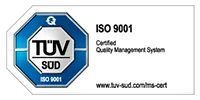Project Management Triangle and It's Benefits | Incepteo | UK
- BlogTechnology The Project Triangle: A framework for delivering successful digital products




The Project Triangle: A framework for delivering successful digital products
 The Project Management Triangle: A framework for delivering successful digital products
The Project Management Triangle: A framework for delivering successful digital products
At Incepteo we’ve worked with many different teams all around the world and we know how important project management is to the successful delivery of a website or App. Yet, according to project management experts Hive, only 58% of organisations understand the value of project management triangle, so, we work hard with our clients to offer them a project framework that enables us to partner with them successfully and manage projects to reach the right results.
The Project Management Triangle
A clear project framework is key to understanding the limiting factors on a project, appreciating what the impact of these may be, planning how to adapt to them and understanding the implications of these changes on the overall project. One widely used project management framework we use to ensure that we tick these boxes is the Project Management Triangle, also known as the Iron Triangle or Triple Constraint Triangle.
The Project Management Triangle identifies three key elements of a project: scope, time and cost, forming a part of the project framework. These three elements need to be managed together because adjusting one of the elements will require a compromise on at least one of the others.
For example, if the timing of the project is fixed, because a delivery date can’t be moved, it may be necessary to increase resources or cut the scope of the project to achieve this. Without an understanding of the dynamics of scope, time and cost and the compromises that need to be made, project quality will slip. If you find that you’re compromising on all three elements of the Project Management Triangle, then your project is destined for trouble.
Elements of the Project Management Triangle
To maintain the quality of a final product, a balancing act needs to be managed between scope, time and cost. It’s important to understand how they impact each other.
Scope
This refers to what is to be delivered at the end of the project. Once the scope of a project has been determined it is possible to then make predictions about the cost and time needed to complete the project. When working with clients we ensure we take time to understand exactly what they want and need (not always the same thing!) so we can work with them to define the scope of the project clearly and make an accurate forecast of time and cost.
The scope can include various aspects, such as quantity, so if the scope of a project increases or decreases then, within the framework of the project management triangle, it becomes apparent that there will be an impact on time and cost.
Cost
All projects need a budget, forming a crucial aspect of the project framework, and it’s important to know what it is as early as possible. Changing budgets can have a dramatic impact on the project in terms of its scope, what can be delivered and timeline. Cost should not just be thought of in terms of financial implications; a range of resources such as equipment, facilities and people are also part of the cost equation.
Changes in the cost of a project may be outside the control of those delivering it. Supplier costs, employee changes and new technologies all affect expected costs and emphasise the need to stay on top of a project budget in order to react quickly to changes.
Time
This is the total time it takes to finish all the tasks within a project, forming a part of the Project Management Triangle. There may be milestones along the way which determine interim deliverables, but time is often a focus area for many clients. Yet, again, the predicted time to complete a project will be impacted by many outside factors, such as supplier delays, changes in deliverables, or underestimating the length of time needed to complete a task. If something changes to affect the timeline, it may be necessary to add more resources to the project, subsequently increasing costs, to compensate for a loss of time.
Starting a project, with all parties sharing clear expectations of what is to be delivered, when and how, provides a common focus for everyone involved and is essential for a successful team dynamic. An awareness of how these factors interact can also give insights into how they can be challenged and adapted.
Building a shared understanding
Incepteo believes that software development is incremental, involving iterations of build and perfecting, developed by a team of stakeholders and developers who trust each other and work closely as one team.
Necessary to establishing this teamwork is a transparent framework within which we all operate to understand the basis upon which we make joint decisions; the Project Management Triangle provides such a project framework.
A shared understanding of the three aspects of a project ensures awareness of the trade-offs that are being made to accommodate a change in one aspect. When there is a need to have a “difficult” conversation about trade-offs, we share an understanding with our clients of the need and motivation for such conversations and the priorities of the client in order to maintain the quality they need. This removes a lot of potential friction when difficult decisions are needed.
Delivering results with the Project Management Triangle
It’s staggering to look at the cost to business of project management challenges. To mitigate the risk of such costs it isn’t necessary to tightly restrain every aspect of a project, but rather to be clear from the beginning about expectations, setting realistic goals and understanding how to adjust to changes that challenge initial assumptions. This is something we manage in all of our projects with different businesses across many sectors, and where we see our partnership with clients really adding value.
Our project teams at Incepteo carry out a deep-dive discovery meeting with each client at the start of a project to develop clarity around the purpose and expectations of what they want. The result is that from the very beginning we establish the project framework direction and priorities based on the Project Management Triangle upon which to base decisions as we move forward.
It is also typical of the way we work with our clients to offer complete transparency and an understanding of how we will achieve their goals. The framework of the Project Management Triangle allows us all to talk openly and honestly in terms of how we adjust scope, cost or time to deliver priorities if necessary.
Transparency over how project management works, builds trust within partnerships and drives open conversations based on a shared understanding.
This develops a dynamic, connected and productive team with a safe space for challenging and questioning each other with the result that we can deliver exciting, cutting-edge outcomes without the drama or surprises.
Share this:
Recent Posts
- Strategic Engagement Models with Technology Service Companies: The Incepteo Approach
- The CTO Advisory: Why Your Startup Needs Expert Technology Guidance
- AI Development Predictions 2024: Anticipating the Next Phase of Innovation
- Revolutionizing Mobile App Development 9 Innovative Technologies Leading the Change
- Ensuring Mobile App Security: 7 Vital Measures Every Developer Should Implement
By Sector

How Can Incepteo Help You?


Quick Links
AI SERVICES
2024 © All rights reserved by Incepteo

